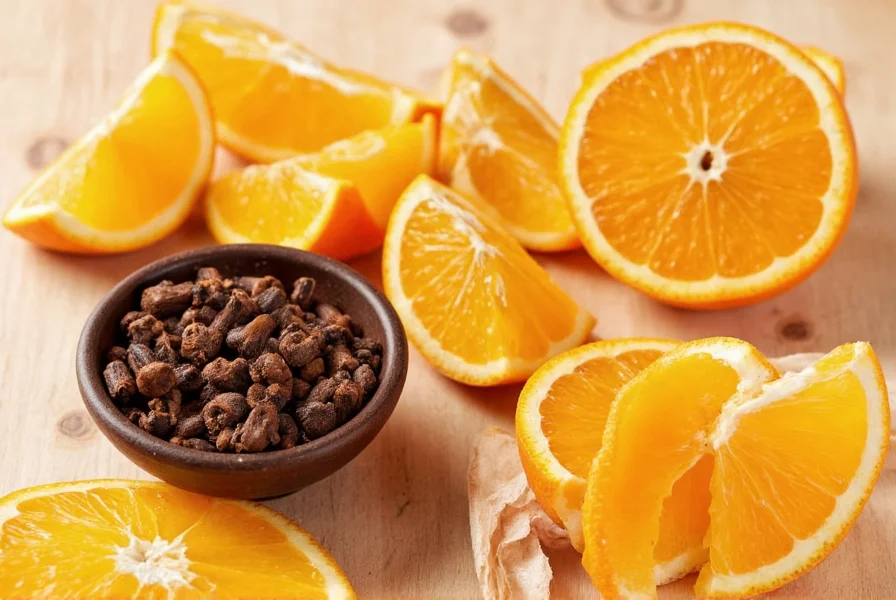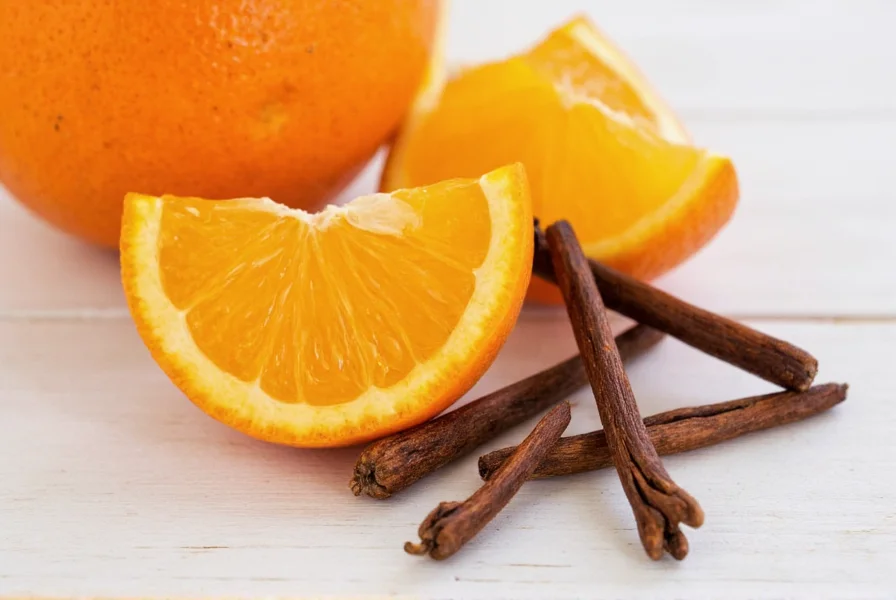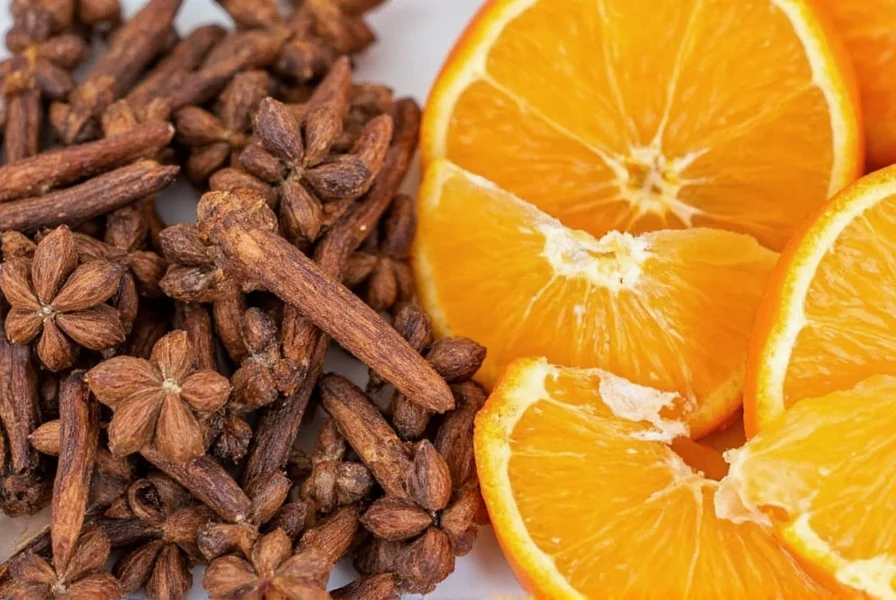The Historical Significance of Orange and Cloves
Tracing back to ancient spice trade routes, the pairing of orange and cloves held special significance in multiple cultures. In 16th century Europe, wealthy households displayed oranges studded with cloves as both decorative items and natural air purifiers during plague outbreaks. This practice, known as "pomander" (from pomum ambra, or apple of amber), served dual purposes: the citrus fragrance masked unpleasant odors while cloves' antimicrobial properties helped reduce disease transmission.
Across Asia, traditional medicine systems incorporated this combination differently. Ayurvedic practitioners recommended orange and cloves for digestive health, while Chinese medicine utilized the pairing to address respiratory concerns. These historical applications weren't merely superstition—modern science has confirmed many of these traditional uses have biochemical foundations.
Scientific Properties and Health Benefits
The synergy between oranges and cloves creates enhanced therapeutic effects. Oranges provide:
| Compound | Concentration in Oranges | Primary Benefits |
|---|---|---|
| Vitamin C | 53mg per medium orange | Immune support, antioxidant protection |
| Limonene | 90% of citrus peel oil | Anti-inflammatory, mood enhancement |
| Hesperidin | Significant in peel | Vascular health, antioxidant |
Cloves contribute their own powerful compounds:
- Eugenol (70-90% of clove oil): Potent antimicrobial and analgesic properties
- Beta-caryophyllene: Anti-inflammatory compound that interacts with cannabinoid receptors
- Vitamin K: Essential for blood clotting and bone health
When combined, research shows these ingredients create enhanced antioxidant capacity compared to either ingredient alone. A 2022 study published in the Journal of Food Science demonstrated that the combination increased free radical scavenging by 37% compared to isolated components.

Practical Applications for Modern Living
Today's households can leverage this ancient pairing in multiple practical ways:
Natural Air Freshening
Creating a homemade orange and cloves air freshener requires minimal effort. Simply stud a fresh orange with whole cloves (approximately 1 clove per ½ inch), then place in areas needing odor neutralization. The citrus oils evaporate while the cloves slowly release eugenol, creating a long-lasting fragrance that naturally eliminates bacteria causing odors. This method works particularly well in kitchens, bathrooms, and entryways.
Culinary Uses
Chefs worldwide utilize this combination for depth of flavor. The classic "orange studded with cloves" technique appears in:
- Mulling spices for cider and wine
- Preserving fruits and making marmalades
- Infusing vinegars and oils for dressings
- Flavoring roasted meats and vegetables
For a simple orange and cloves tea remedy, simmer orange slices and 5-6 whole cloves in 2 cups of water for 15 minutes. This preparation provides respiratory support during cold season while delivering vitamin C and antimicrobial compounds.
Household Applications
Beyond culinary and aromatic uses, this pairing serves practical household functions:
- Natural moth repellent: Place dried clove-studded oranges in clothing storage
- Surface cleaner: Combine orange peels and cloves in vinegar for an antimicrobial cleaning solution
- Compost deodorizer: Add to compost bins to reduce unpleasant odors

Safety Considerations and Best Practices
While generally safe, certain precautions enhance effectiveness and safety:
- Use organic oranges to avoid pesticide residues on the peel
- Limited to 1-2 cloves daily for children under 12
- Avoid direct skin contact with concentrated clove oil
- Those on blood thinners should consult physicians before consuming large quantities
- Store dried clove oranges away from direct sunlight to preserve potency
The optimal ratio for orange and cloves applications varies by use: for air freshening, use 1 clove per ½ inch of orange surface; for culinary applications, 3-5 whole cloves per orange provides balanced flavor without overwhelming spiciness.
Conclusion: Timeless Wisdom Meets Modern Science
The enduring popularity of combining oranges and cloves spans centuries because it delivers tangible benefits validated by both tradition and science. This simple pairing offers accessible natural solutions for air quality, culinary enhancement, and wellness support without requiring specialized equipment or expensive ingredients. By understanding the scientific basis behind this traditional practice, modern users can apply it more effectively while appreciating the wisdom passed down through generations.
How long does an orange studded with cloves last as an air freshener?
A fresh orange studded with cloves typically remains effective for 2-3 weeks before drying out completely. For extended use, you can place the studded orange in a bowl with additional whole cloves and a small amount of water, which helps maintain moisture and prolongs the fragrance release. Dried versions can last several months while still providing subtle scenting.
Can I use ground cloves instead of whole cloves with oranges?
While whole cloves work best for traditional applications like studding oranges, ground cloves can be used in cooking and tea preparations. Whole cloves provide slower release of essential oils and maintain structural integrity when studded into orange peel. For beverages and cooking, use ¼ teaspoon ground cloves as equivalent to 6-8 whole cloves, adjusting to taste preferences.
What scientific evidence supports health benefits of orange and cloves?
Research shows the combination demonstrates enhanced antioxidant activity compared to either ingredient alone. Studies published in the Journal of Food Science (2022) and Phytotherapy Research (2021) confirm the synergistic effects, particularly regarding antimicrobial properties against common pathogens. The vitamin C in oranges also improves absorption of beneficial compounds from cloves.
How do I make orange and cloves tea for cold relief?
To prepare therapeutic orange and cloves tea, simmer 2 orange slices and 5-6 whole cloves in 2 cups of water for 15 minutes. Strain the liquid and optionally add honey or lemon. The vitamin C from oranges combined with eugenol from cloves creates a soothing beverage that may help alleviate cold symptoms and support immune function.
Are there any safety concerns with using orange and cloves together?
The combination is generally safe when used in culinary amounts. However, excessive consumption of cloves may cause mouth irritation due to eugenol content. Those on blood thinners should consult their physician before regular consumption, as both ingredients have mild anticoagulant properties. Always use organic oranges when including the peel in preparations to avoid pesticide exposure.











 浙公网安备
33010002000092号
浙公网安备
33010002000092号 浙B2-20120091-4
浙B2-20120091-4